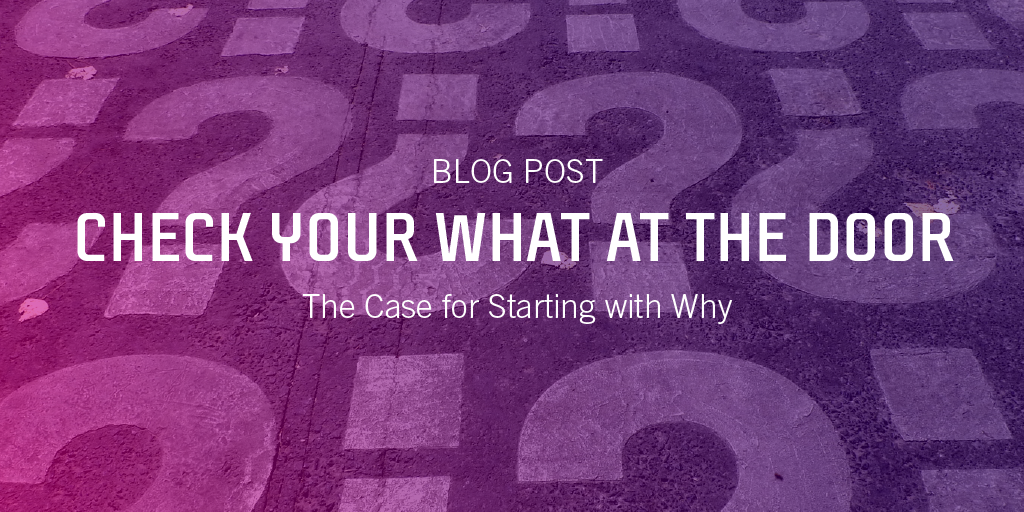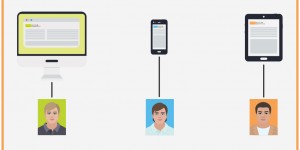“Why?” is one of those questions that most people either look forward to answering or completely dread. It’s amazing how a word comprised of only three letters is able to conjure a swirling eddy of ideas, follow-up questions, and overwhelming concern. Perhaps it’s the uncertainty of most individuals to “properly” respond that can fill those on the receiving end of why with dread.
As children, we constantly ask “why” – why is the sky blue? Why does the wind blow? Why does your nose look different from mine? The long list of oftentimes trivial inquiries seems never-ending with some answers coming easily, and others leaving us scratching our heads. One thing we’re sure of is that this constant questioning is indicative of our innate human desire to understand the world around us; to connect with our surroundings and most importantly, with each other.
Ironically, we ask ourselves what to do. Well, we’re here to make the case for why.
When why feels difficult, our unconscious reaction is to start yammering on about what. Fundraisers and marketers–both in non-profit and for-profit–know this well and are repeat offenders. It’s easy to become disconnected with our why after working so closely on our what. Sometimes, it’s not a disconnect but rather that we’ve simply forgotten why. Other times we just flat out don’t know. So we talk about our programs or our products in hopes of keeping our audiences engaged, but what is actually happening is we’re pushing them farther away. Donations drop, program enrollment staggers, and a steep lack of interest becomes unbearably evident. Meanwhile, a few other folks out there seem to be doing things that exceed expectations, leaving us wondering what’s possible. There’s an unquantifiable “something” that that competitor may have, meanwhile we’re sitting in the shadows twiddling our thumbs.
In his now famous TED talk, author Simon Sinek ponders these same questions. He explains his thought process called “Start With Why”, and his findings actually correlate with issues that organizational leaders and marketers face daily. Below we’ve summarized his methodology and then have some pointers for how non-profits can implement some elements into their communication strategy.

Why – The core belief (mission) of the organization. Why do you exist?
How – How do you fulfill that mission or belief?
What – What do you do to fulfill that mission or belief?
Most people do this backwards and when asked about their organization will say something like:
“Well, we run an afterschool art program for at-risk youth by working with local schools and teaching artists.”
Great, but where’s the why? And what would this sound like if we flipped the script and began there?
“Our goal is to transform lives, especially underserved youth, by fostering life-long learning and creative self-expression through the wonder of art-making. We do this by working with local schools and teaching artists to address the needs of the community and engage the children during our weekly afterschool program.”
There’s a big difference in how those two responses feel, and chances are that one leaves you wanting more and the other leaves you inspired. I wonder if we can guess which is which… #2 of course! Something just clicks when you read the second explanation, a gut instinct that inspires trust and associates value to what you do. You’ve heard the expression go with your gut—well, this is it in action.
See also: Emotional Appeals: 3 Keys to Feel-Good Cultivation
Okay, so why bother adopting this process anyway? You’ve been doing fine churning out appeal letters and making Facebook posts talking about your programs with lots of pictures illustrating what happened. If your donation revenue remains relatively consistent, the issue for you isn’t so much that you’re not raising enough money but rather that there’s a whole other audience that’s yet to be tapped. Better yet, are you optimizing your gift potential? How might revenues grow if only your audience understood more? And how would that type of increase impact your ability to implement such change-affecting programs or create dynamic products?
Here’s what can happen when you take a step back and reconnect with your mission:
+ When current or prospective donors or customers realize you care about the issues they care about, they’re more likely to give or purchase. Leave no room for misinterpretation of your organization or brand.
+ Speaking this way shows the human side of your organization or company. This is a chance to go beyond the stagnant “this is what we do, this is what we need/sell” messaging and to connect people with your ideology in a more meaningful way.
+ People that truly connect with your mission are going to stick around, plain and simple. If your mission doesn’t resonate with a patron, chances are they were fleeting to begin with. This goes the same for companies working to establish brand loyalty.
See also: Your Most Effective Summer Strategy
So go forward and start thinking about why! You will find your staff newly inspired, re-energized, and ready to tackle the work with a whole new purpose-driven outlook. Incredible things can happen when you identify your reason for being. Let us know how “why” has changed your business!
Like what you see? Stay in touch!
You might also like:
+ Emotional Appeals: 3 Keys to Feel-Good Cultivation
+ Your Most Effective Summer Strategy












